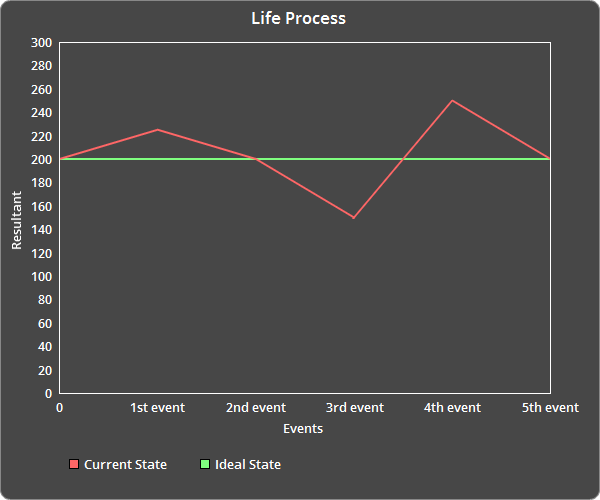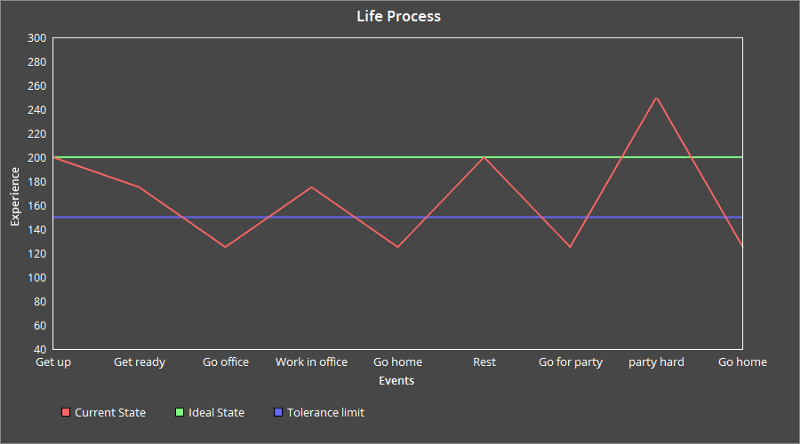Do you have a million-dollar business idea in mind and don’t know HOW to proceed? Whether it is worth investing time, money and effort?
This is the question that haunts many entrepreneurs and demotivates them from working on their business idea. The best way to start when you have a business idea in mind is to think of the problem it is trying to solve.
In this blog, you will figure out the WHAT, WHO, and HOW of identifying and validating problems.
This blog gives an in-depth view of the steps mentioned in my previous article: Came up With a Great Business Idea? What Next?—which covers 6 steps to validate a business idea. Here we will go through 3 steps to identify and validate the problem:
The “WHAT”
So, you have a new business idea in mind. The first step is to figure out the problem that it is trying to solve. There are many ways in which one can look at the problem.
This approach will help you in identifying and figuring out problems in a logical way:
So WHAT is a problem? A problem is any deviation from the standard or ideal.
To explain it, I will be viewing our life proceedings from a process point-of-view. Let us call it the life process. Every activity we do is part of it and helps shape it. With every event or activity, we try, or want, to achieve something. We will name the result of activity the resultant. Problem occurs when we cannot achieve it.
I will be defining two states here. A state defines our condition, status, experience, and standing. One is the state that we are experiencing currently, or the current state. The other state is the one that we expect or prefer to experience, or the ideal state (standard).
With states defined, you can always calculate the difference between them at any particular event or happening. The difference is the problem that needs to be solved. It can be positive, negative, or zero. We need to focus our attention on those negative deviations.
Kindly have a look at the graph below to have a better understanding of what I am trying to convey here:

I am assuming the behavior of both of the states to be linear to make things simpler. The behavior shown here is just for the sake of explanation. The activities that we perform, or events that take place in our life, form the X axis, while their result forms the Y axis.
This graph will vary from person to person. At the first event, we can see that the person experienced the unexpected (positive deviation from ideal state), while at the third event, we can see that he experienced some type of problem (negative deviation from ideal state).
For example, UBER was established to solve the problem faced by people hiring a cab in San Francisco. People had to wave their hand until they could hail a taxi in snow, rain, and wind, and even after boarding the taxi, they had to negotiate with the driver for change and tip. The overall experience of taxi hailing as a current state, was frustrating. People wanted something better. Their expectations or wants define the ideal state. UBER narrowed the gap between the two states and thus solved the problem.
The above explanations demand us to look at the problem from a different perspective. The following things define the WHAT of problem:
- Ideal state (preferred condition)
- Current state (existing condition)
- Event that triggers the state
We should not only look at the problem, but the event that triggered it, as well as the expectations of the audience from the result of the event (ideal state).
For UBER, the problem was the pain experienced by people in hailing a taxi; the ideal state is an on-demand, cheap taxi hailing service; and, the event is the act of a person looking for a taxi.
To Do: Write the problem down, state the assumption of the ideal state, and note the event that triggered the problem. These assumptions will be validated in the last stage, i.e, the WHO of problem.
Categorizing the “WHAT”
Now that we have defined the WHAT, it’s time we dig into it and break it down further.
WHAT is divided into categories based on the intensity of the problem (extent of deviation from ideal state) and the frequency (number of occurrences of the event):
1. Common problems.
From the process point-of-view, these problems are the usual, historical, quantifiable variations in a system. All problems that come within X deviation from the ideal state can be referred to as the X tolerance limit.
Though we experience them, they don’t affect us psychologically. These are the problems that we don’t mind.
2. Key problems.
From the process point-of-view, these are problems which occur outside X deviation from the ideal state.
We experience these problems and they affect us psychologically. These are the problems that we mind, think about, and hope for a solution for.
3. Routine problems.
From the process point-of-view, these are problems which occur routinely. The frequency of occurrence is more than Y.
These are the problems we experience frequently in our day to day life. The event that triggers their occurrence happens at least daily. These form part of our habit.
4. Non-routine problems.
From the process point-of-view, these are problems that occur rarely. The frequency of occurrence is less than Y.
The event that triggers their occurrence happens rarely. These don’t form a part of our habit.
Take a look at the below graph to gain a better understanding of the theory explained above:

This chart is a picture of a Male, White, 25–30 years of age, who is a Bachelor that is living in San Francisco, working as a Manager, earning $40,000 per year, and who loves to party.
The ideal state, current state, and tolerance limit of the profile is described above. This data comes after doing in-depth research on your target audience, which will be done in the next stage.
Here we notice that the event of going anywhere be it the office, home, or to a party, is giving rise to key and routine problems. While in other cases like getting ready or working in the office, problems experienced are common and non-routine. UBER just identified and solved the key and routine problems.
To Do: Categorize the identified problem in the categories defined above.
The “WHO” of Your Problem
We have defined and categorized the WHAT of the problem. It’s time we validate things we have defined.
States defined above, namely, current and ideal, depend upon many parameters that include the WHO of the person and the WHAT of his or her ability, beliefs etc.
For simplicity, these parameters have been grouped under the below mentioned Standard Customer Market Segmentation Categories:
- Geography: Based on regional variables such as region, climate, population density, and population growth rate.
- Demography: Based on variables such as age, gender, ethnicity, education, occupation, income, and family status.
- Psychography: Based on values, attitudes, interests, and lifestyle.
- Behavior: Based on variables such as usage rate and patterns, price sensitivity, brand loyalty, and benefits sought.
To Do: Define the WHO of your problem with the help of the resources mentioned above.
Now that we have defined the WHAT and WHO of the problem, it’s time we validate them. Kindly follow the following steps for market segmentation and problem validation:
- The WHO can be you, me, anyone. Do profiling of the identified WHO based on the above-mentioned categories.
- Do profiling as precisely as possible, as this is the first step to define the target audience.
- Make a list of known people who qualify your defined profile. If you cannot make up a list with a minimum of 70–80 names, find the remaining people via LinkedIn or referrals from existing people.
- After figuring out 70–80 names, it’s time we contact them. You can contact them over mail, phone, or any other social networking platform, whichever is feasible.
- Try to arrange a short meeting. Be prepared with the set of questions you need to ask. You can use free online services like Survey Monkey or Google Forms for creating surveys.
Extract the following information while contacting your target audience:
- Try to extract as much information about the person as possible. This will help you in getting more insight about your target audience. Fill in as many segmentation fields as you can.
- Their daily schedule.
- WHAT are the problems he or she faces, HOW key are those (intensity), WHY and WHEN do they arise (event), HOW often do they arise (frequency)?
- Also ask HOW they solve the problem and WHAT they expect the solution to achieve (ideal state). It will be better if you can make a sheet with problems forming the rows and validations columns.
- Put your identified problem in front of them and ask the above questions.
After the above exercise, you should have at least 30–40 responses.
The following steps will help you analyze them:
- Write the responses down with problems as rows; validations and profile of the person as columns.
- Take a look at the all the responses. You will more or less figure out whether your identified problem is a key problem or not.
- Group the same problems together. Write down the number of people for whom it is a key problem, take the average frequency, and write the other things as
- Analyze the responses to your problem. See whether it is a key problem for at least 20 people out of those If not, figure out what went wrong. Either the problem that you are solving is not a key problem, or the target audience that you selected is wrong. But don’t be disheartened, you have learned a lot on your way to validating the problem. You still have a list of other problems to solve. Make the required changes in your approach and proceed to the next step.
- Check the frequency of your identified key problems. Key problems that arise routinely are the ones you need to solve.
- Check the expectations of your target audience from the result of the event (ideal state).
After performing the above exercise, the relationship between event, problem, target audience and ideal state will be pretty much figured out. You can always iterate to refine your results and understanding. All of your assumptions are validated now.
To Do: Note down the problem in question, the event that triggers the problem, expectations from the result of the event, and the target audience.
Now you have enough data to make the graphs explained above. The graph will help you visualize things in a better way, as it will give you a unified view of every parameter. It will help you in analyzing the existing data and predict trends for similar market segments.
The Art of Making Graphs:
Select the profile. Draw the series of events that takes place in a day of the defined profile on the X axis. Draw a horizontal line at some distance from the X axis for each event to signify the ideal state. Draw a horizontal line at Y distance from the ideal state line. Y depends upon the intensity of difference between the two states. See whether it should fall beneath, above, or at same level as the ideal state line. This line will be your current state line.
The next steps that you’ll need to take will involve searching for existing solutions for the problem that you have identified in this step. For a quick look on the remaining steps, check out Came up With a Great Business Idea? What Next?.



